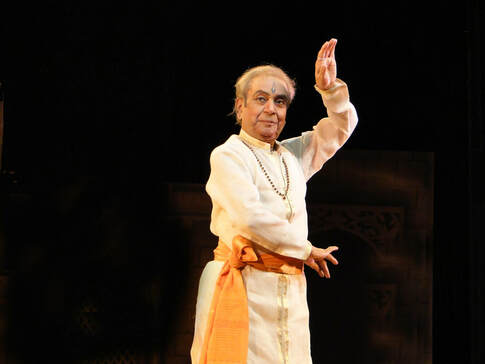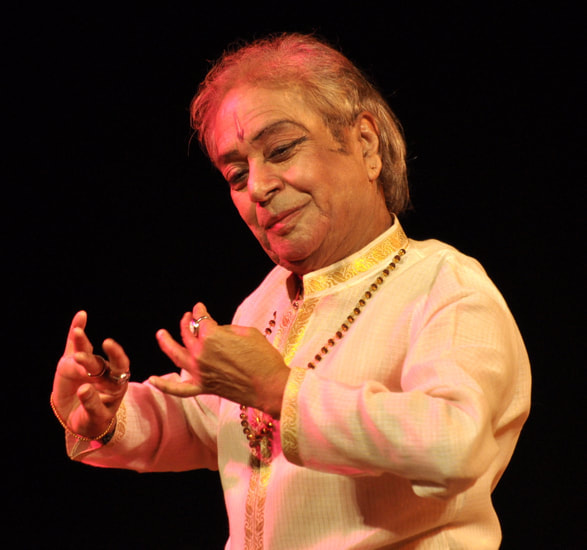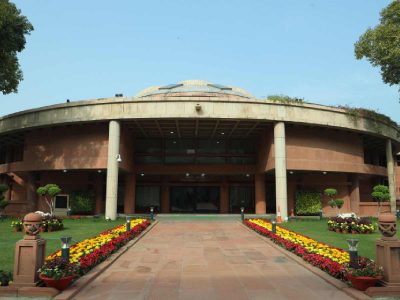Dancer, guru and multifaceted legend Pt Birju Maharaj (1937–2022) leaves an irreplaceable void in Delhi’s dance circles and the country rich tapestry.
Earlier this week, the Kathak world mourned the loss of one of its greatest icons – Pandit Birju Maharaj. He died of a cardiac arrest in the early hours of 17 January, surrounded by his family and disciples. The Kathak exponent would have turned 84 next month.
“He was with us when this happened. He had his dinner and we were playing ‘Antakshari’ because he loved old music. He was lying down and suddenly his breathing became uneven. We think it was cardiac arrest as he was also a heart patient”, Ragini Maharaj, granddaughter of Birju Maharaj, told PTI. A month before his demise, Birju Maharaj was undergoing dialysis treatment. Despite the health issues, his family has found solace in the fact that Maharaj did not suffer much in his last moments.
Born in Lucknow on 4th February 1937 in a home where he was the only boy amid several girls, Birju Maharaj was called ‘Krishna’ among the gopis. “That’s why my name became Brijmohan Misra. Brij is the name of the city where Krishna was born and Mohan means attraction. It’s a way of saying Krishna – the God of love and dance”, the maestro had once stated in an interview.
His family belonged to the Kalka Bindadin Gharana of Kathak and comprised several court dancers and vocalists, thus making it inevitable for him to spend his childhood touring several principal courts across India. Learning dance and music was an integral part of his lifestyle. He diligently engaged in riyaaz to acquire grace and consistency. For him, riyaaz never ended because one could never attain complete perfection.

Following regular practice and hard work, Maharaj gave his first performance at the age of seven and left the audience in awe. Art was his world, and he was dedicatedly absorbing what he saw around him. He was gradually mastering the nuances of one of the most difficult classical dances of India.
After he came to Delhi at the age of thirteen, Maharaj started teaching dance at Sangeet Bharati in Delhi. He once said that the move from Lucknow to Delhi was quite intimidating for him, as he would often get lost in the crowded streets. Then one day, he made Regal Cinema his regular landmark from where he would wander and figure out his way back home or to the institute. Years later, this hustling city would go on to become his home, where he would spend a majority of his private and professional time.
After a successful career stint at Sangeet Bharati, he joined his uncle, Shambhu Maharaj, at the Bharatiya Kala Kendra – now known as Kathak Kendra – where he was also the Head of Faculty and later, the director till he retired in 1998 at the age of sixty. In an interview, Birju Maharaj once stated that teaching dance emulated helping someone attain a balance between the mind and soul. It was his passionate choice that manifested throughout his career trajectory, especially when Maharaj started Kalashram – his dance school in Delhi.
Birju Maharaj was an elegant dancer, classical composer, captivating orator, sensitive poet and spontaneous artist. He would see the audience’s vibe minutes before the performance started, and then decide what would he perform for them. He fed off the audience’s energy. The sound of an audience member’s cough would translate into a tihai – a percussive phrase repeated thrice to end with a sam, the first beat of a rhythmic cycle.
The Padma Vibhushan awardee was also an exceptional singer with mastery in thumri, dadra, ghazal and bhajans. He emphasised that every dancer must at least be able to appreciate music and have adequate knowledge about it. “Dance and music are complementary. You must know what music, which raga will add grace to your dance,” he once said.
Such was his contrasting taste in music that he loved listening to Ustaad Shahid Parvez Khan’s sitar recitals as well as Bollywood classics by Lata Mangeshkar, Asha Bhosale, Mohammed Rafi, Kishor Kumar and others. Maharaj even lent his voice to the two dance sequences that he composed. for the Hindi film Shatranj Ke Khiladi.
But that was not the only time he worked for a film. In 2002, he choreographed Madhuri Dixit, one of his many successful students, to the popular song ‘Kaahe chhed mohe’ from Devdas. He also worked as a choreographer for films like Umrao Jaan, Dedh Ishqiya, Bajirao Mastani, Kalank among others. In 2013, he made his debut in South Indian films when he choreographed the song ‘Unnai Kaanatha Naan’ for Kamal Hasan’s Vishwaroopam. He received the National Film Award for best choreography for this song.
For Birju Maharaj, teaching kathak was a spiritual act, just like performing kathak. To his students, Maharaj was more a friend or guide than a teacher. He never raised his voice, even at the most unpromising students. During India’s independence struggle, the rigid Gharana system that Maharaj belonged to was now opened to students of middle-class backgrounds. While this irked several distinguished personalities, Maharaj, who equated dance with life, saw it as an opportunity to welcome people into his artistic world. He taught his students by being encouraging, persuasive, inspiring and fun. While paying tribute to the kathak legend, actress Madhuri Dixit summarises Birju Maharaj’s persona as a guru saying, “He was a legend but had a child like innocence. He was my guru but also my friend. He taught me the intricacies of dance and Abhinay but never failed to make me laugh at his funny anecdotes.” His vision for Kalashram was based on these fundamental principles of teaching which would enable his students to honour his legacy.
For a man with immense knowledge, Birju Maharaj’s thirst for learning remained insatiable. He always wanted to learn more and was left intrigued by several things under the sun. His granddaughter, Shinjini Kulkarni says in one of her columns that Maharaj was fascinated by gadgets – so much, that his favourite pastime was to rip apart gadgets and put them back together as they were. He was also passionate about cars and driving and was looking forward to buying a gypsy too. In one of his interviews, he had said that if his dancing skills would have gone unnoticed, he would have become a mechanic. He also loved to travel and take his art with him to the corners of the world. And when it came to food, no matter where he was, Maharaj always preferred the simple diet of dal, rice, roti and sabzi.
Birju Maharaj tried to lead a simple life irrespective of the milieu. No matter where he was in the world, his food would be a simple plate of dal, rice, roti, and sabzi. And no matter the time and generation, he wanted to take Kathak to its artistic zenith. He stuck to his simple choices and worked to follow them through. He is rightly known as the torchbearer of his Gharana and the father of Kathak.
An epitome of graceful dance, an inspiring guru, and a multi-faceted artist who left a massive impact across the cultural globe, Birju Maharaj’s name has become synonymous with Kathak. He has left behind a legacy that promises to shine forever.
With inputs from PTI





